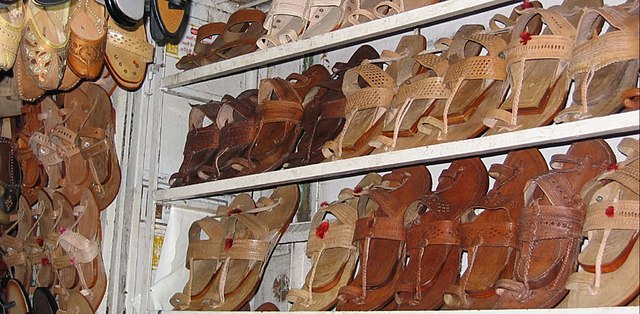Luxury fashion house Prada has unveiled a new line of sandals that bear a striking resemblance to traditional Kolhapuri chappals, igniting both excitement and debate within the fashion world and beyond. The move shines a spotlight on this iconic Indian footwear, but also raises concerns about cultural appropriation.
A Nod to Tradition? The Kolhapuri Heritage
Kolhapuri sandals originate from Kolhapur, Maharashtra, India. These handcrafted leather sandals are known for their distinctive T-strap design, intricate leatherwork, and vegetable-tanned leather. A single pair can take artisans days to create, involving skills passed down through generations. While exact legal protections are limited, the Kolhapuri’s geographical origin is a significant factor in its cultural importance.
The Origins and Significance of the Kolhapuri Chappal GI Tag
Kolhapuri chappals, handcrafted leather sandals originating from Kolhapur, Maharashtra, hold significant cultural and economic importance. The GI tag, awarded in 2019, legally protects the name and ensures that only artisans from specific regions can produce and sell them as authentic Kolhapuris. These chappals, often adorned with intricate designs, are a source of livelihood for thousands of artisans in the region.
Cultural Appropriation Concerns
The launch has sparked debate about cultural appropriation. Some argue that Prada is profiting from a design deeply rooted in Indian culture without acknowledging or compensating the artisans who have preserved this craft for centuries. Concerns also arise that the luxury brand’s version may overshadow the original, authentic Kolhapuri.
A Prada spokesperson stated, “We acknowledge the sandals are inspired by traditional Indian handcrafted footwear, with a centuries-old heritage.”
Impact on Artisans and the Future
The controversy highlights the challenges in protecting traditional crafts in a globalised market. It raises questions about the responsibility of international brands to respect cultural heritage and fairly compensate artisans. The future of the Kolhapuri chappal and its GI tag depends on raising awareness and ensuring legal frameworks are effectively enforced.
This episode highlights the complex relationship between luxury fashion and traditional crafts, prompting a crucial conversation about cultural appreciation versus appropriation and the importance of protecting the heritage and livelihoods of artisans.


















